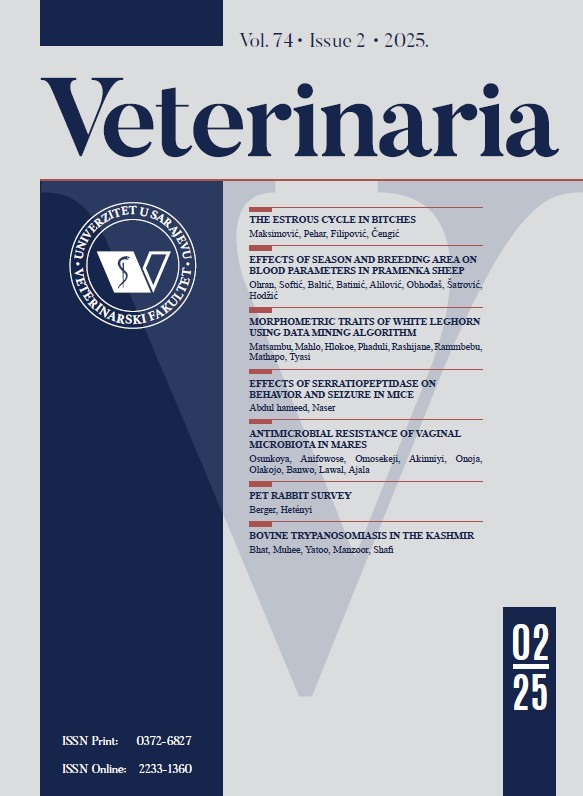Pathomorphological and histopathological changes of avian chlamydiosis
Keywords:
avian chlamydiosis, pathomorphological changes, histopathological changesAbstract
Avian chlamydiosis is an infectious disease of birds caused by gramnegative bacterium Chlamydophila psittaci. However, this disease can occure among other mammals including humans. Chlamydiosis often presents as an inapparent infection, especially in older birds. During stressful conditions (deficient diet, transportation, great population density in small spaces, etc.) and comorbidity, however, the birds usually begin to either present with the clinical signs of chlamydiosis, or secrete many causative agents to the environment. Depending on the serotype of the causative agent, and the type and age of the host, the disease usually causes systemic disorders, and is often fatal. The affected birds present with lethargy, fever, typical yellow-green discharge from the eyes and nose, diarrhea, anorexia and the weight lost. Bearing capacity is reduced. Autopsy findings show hepatomegaly with necrotic foci, splenomegaly and fibrinous inflammation of the pericardium, peritoneum and air sacs. Pathohistological findings reveal elementary bodies in the intercellular space dyed red to reddish purple using the Gimenez technique.
Downloads
Published
How to Cite
Issue
Section
License
Copyright (c) 2020 Edin Šatrović, Teufik Goletić, Aida Kavazović, Amel Ćutuk , Lejla Krkalić

This work is licensed under a Creative Commons Attribution 4.0 International License.







